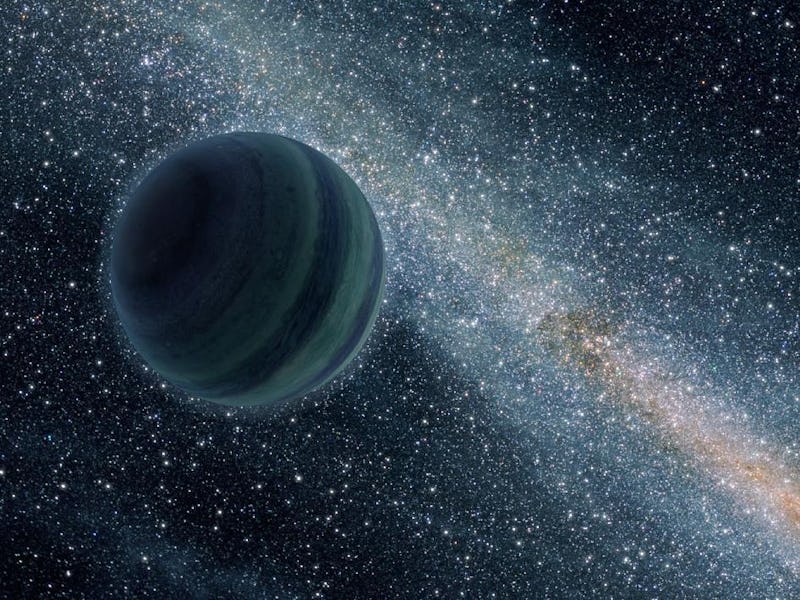This Rogue Exoplanet the Size of Jupiter Is Wandering Aimlessly Through the Universe
Will it stop by the solar system anytime soon?

Earth is about 4.54 billion years old. So a planet with just 10 million years under its belt is, by comparison, a wee little infant. Such young things need the warm embrace of a parent star to guide and nurture them into adult years.
And yet, scientists have just found such a planet with no home to call its own: 2MASS J1119-1137, an exoplanet between four and eight times the mass of Jupiter that’s without star nor orbit, about 95 million light-years away. A hefty son-of-a-bitch, it’s one of the youngest free-floating exoplanets ever found.
A new paper to be published by The Astrophysical Journal Letters details the findings by astronomers from Carnegie and Western University in Ontario, Canada. Using NASA’s Wide-field Infrared Survey Explore, the research worked to identify the object and pinpoint just exactly where it was.
Initially, it wasn’t quite clear whether the unusually bright 2MASS J1119-1137 was a nearby planet or a distant star. “Distant old and red stars residing in the far corners of our galaxy can display the same characteristics as nearby planet-like objects,” said CWU astronomer and study coauthor Jacqueline Faherty in a news release. “When the light from the distant stars passes through the large expanses of dust in our galaxy on its way to our telescopes, the light gets reddened so these stars can pose as potentially exciting nearby young planet-like objects in our data, when they actually are not that at all.”
Through analysis supported by data collected by the FLAMINGOS-2 spectrograph instrument on the Gemini South telescope in Chile, the team confirmed what they were looking at was a super-Jupiter, and not just a pint-sized dwarf star.
The next step was estimating the age of the little bugger — and the astronomers knew that if it was a pretty young planet, there was a good chance it was a nomad without a host star. The FIRE spectrograph on Carnegie’s Baade 6.5-meter telescope in Chile helped show that 2MASS J1119-1137 belonged with a group of a dozen or so young stars in the same solar neighborhood — all around 10 million years old — that were wandering together through a region of the universe called the TW Hydrae association.
2MASS J1119–1137 belongs in the youngest group of stars in the solar neighborhood, known collectively as the TW Hydrae association, which contains about two dozen 10 million-year-old stars, all moving together through space.
The researchers don’t yet have a clue as to the destination of the exoplanet. Its close proximity to the sun — 95 million light-years is actually not a big distance when it comes to space — means the planet might be headed toward our neck of the woods. We’ll have to wait and see, but if it does ever end up in the solar system, you can be sure it’s going to cause some major havoc on the nice rhythm we and the other seven planets here have going.
Luckily, we’ll all be dead before that time gets here.